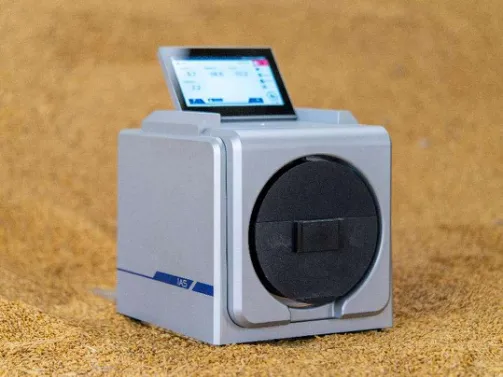The Science Behind NIR’s Non-Destructive Magic
Jul 01, 2025
Near-infrared (NIR) spectroscopy revolutionizes material analysis by extracting critical data without altering samples. Its secret lies in harnessing light-matter interactions at 950–1650 nm – where photons reveal molecular secrets through two key mechanisms:
1.The Physics of Non-Destructive Detection
Diffuse Reflection Mode
When NIR light hits solid/granular samples (e.g., grains), it:
▶ Penetrates 1–5 mm beneath the surface
▶ Scatters due to interactions with C-H/O-H bonds
▶ Reflects back carrying composition data
Example: Analyzing wheat protein without grinding kernels.
Transmission Mode
For liquids/transparent materials (e.g., oils):
▶ Light passes through the sample
▶ Specific wavelengths are absorbed by molecular bonds
▶ Detector measures attenuated light intensity
Example: Testing olive oil purity in seconds.
2.IAS-5100’s Light Path Genius: Patented Side-Illumination
Traditional NIR struggles with uneven samples. IAS-5100’s innovation solves this:

How it works:
Light Mixing Technology: Side-emitted light envelops particles, tripling effective analysis area.
No Grinding Needed: Whole grains/pellets yield lab-grade accuracy (SEC* ≤0.2%).
Real-world impact: Detects hidden moisture pockets in rice grains missed by top-down systems.
3.The Quantum Mechanics of Light-Matter Interaction
Molecular "Fingerprint" Decoding
Energy Absorption:
Photons excite molecular bonds (C-H, O-H) to higher vibrational states.
ΔE=hν(h=Planck’s constant, ν=light frequency)ΔE=hν(h=Planck’s constant, ν=light frequency)
Spectral Signatures:
Each bond absorbs unique wavelengths (e.g., O-H: 1450 nm, C-H: 1730 nm).
Signal Interpretation:
Detected absorption intensities convert to chemical concentrations via chemometric models.
Why Penetration Depth Matters
|
Sample Type |
Optimal Depth |
Data Accuracy |
|
Whole grains |
2–3 mm |
Protein: ±0.25% |
|
Powders |
0.5–1 mm |
Moisture: ±0.15% |
|
Oils |
Full transmission |
FFA*: ±0.05% |
*FFA: Free Fatty Acid
